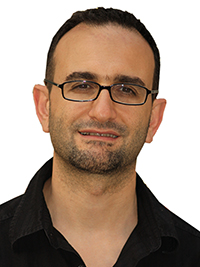Sotir Dhamo

XXX Cycle - (A.A. 2014-2015)
IDAUP
Home Institution: Polis University Tirana
Scholarship
Curriculum: Architecture (ICAR14)
Research Topic: Specific realities & Urban Design
Tutor DA-UNIFE: Prof. Nicola Marzot
Tutor Polis University: Prof. Besnik Aliaj
Nationality: Albanian
Email: sotir_dhamo@universitetipolis.edu.al
Profile
Biography
Sotir is an architect and urban planner with long experience. He participated in several research studies since the early ‘90s; later he contributed in other public and non-governmental organizations such as the Ministry of Public Works, Co-Plan, etc. He is one of the founders of POLIS University. In addition, Sotir has earned an Executive Master degree in public administration from the Syracuse University in US. He taught for some years in Polytechnic University in Tirana and currently he is teaching the subjects of urban design and territorial analyses at POLIS University. Among other, he is co-founder of Metro_POLIS, acting in the field of Architecture; co-founder of Forum A+P, the scientific journal of POLIS University. Sotir is involved in projects for various Albanian cities and the region; conducts research activity in the framework of the Research Unit; as member of the civil society he plays an important role in the Union of Albanian Architects. Sotir wrote scientific articles and other publications in his professional field
Research skills
writing | analytical | observation | communication | creativity
Scientific activities
ORCID ID:
0000-0002-5005-108X
IRIS UNIFE ID:
rp00000
Doctoral research
Specific realities and new hypothesis for urban analyses and urban design; Tirana as a case study
The research is a reflection on how we think about cities, observe, analyze and transform them. Cities along their history develop unique characteristics. Often, these characteristics tend to be sterilized because they do not comply with our predisposition about how the world should be. The research explores on how to extract specifics from a given reality and how to give them life as an alternative to the city of mechanic thinking. The research calls for a more holistic understanding of the urban realm under the quantum perspective. This shift involves more sensitivity to interpret the multiple reality where both/and is the rule, and the overlapping internal relationships create the wholeness; where apparently separated “things” are aspects of some larger whole (Zohar and Marshal 1994). From this perspective the analyzed urban patterns are considered as local-temporal manifestation of territorialities “caught” in the unbroken space-time web of wholeness. The research explores the wholeness of urban patterns also under the fractal city (Batty and Longley, 1994) and complexity (Mitchell, 2009) approaches. According to the former, patterns contain in their internal an invisible structure of relations. Thus, the degree of order we see in the external form is deeper and comes out from relationships and hierarchy contained in the internal form that manifest properties of a system with structure: with its static and dynamic. This complex behavior involves a large networks of individual components that enter in relationship through information exchange (Mitchell, 2009) and evolve from self-organization to self-regulation. The research concludes with an attempt to organize the data obtained from such observation in a model that emphasizes the characteristics of a specific reality. The proposed methodology contains a strong historic and anthropological idea.
Keywords
wholeness | quantum | fractal | complex | design

